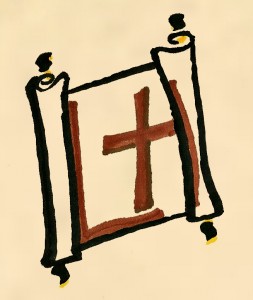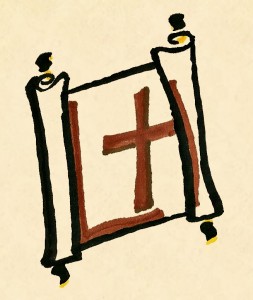Q. How many Aramean soldiers did David kill?
A. Apparently 40,000 foot soldiers and 7,000 charioteers in 700 units of 10.
The passages cited as containing a contradiction are the following:
“But the Arameans fled before Israel, and David killed 700 charioteers of the Arameans and 40,000 horsemen and struck down Shobach the commander of their army, and he died there.” (NASB)
– 2 Samuel 10:18
“The Arameans fled before Israel, and David killed of the Arameans 7,000 charioteers and 40,000 foot soldiers, and put to death Shophach the commander of the army.” (NASB)
– 1 Chronicles 19:18
Some scholars attempt to dismiss the difference in the numbers as a “copyist error”. However, that seems unnecessarily shallow. The books of Samuel and Chronicles contain details from the battlefield that the different scribes found significant to the record or the record’s audience of that moment. Different audiences have different degrees of understanding and communication lingo. It could be that a “charioteer” in the 2 Samuel verse refers to a group of charioteers, just as “troop” sometimes refers to a group of troops. The books of Chronicles tend to be more specific with genealogies, numbers, etc. than the narrative books of Samuel.
Perhaps the writer of Chronicles saw a need to count the Aramean charioteers individually in his record. {Hint: scrolling over the hyperlinked verses reveals that the translators of the King James Version (William Tyndale and his intellectual successors) noticed that the numbers did refer to different aspects of the Syrian militia – 2 Samuel refers to the men of 700 chariots, while 1 Chronicles refers to 7,000 men who fought in chariots. We don’t know for certain what type of chariots they were or how many men each chariot could hold, or if every man skilled in chariot fighting was necessarily in a chariot at the time he was killed.}
But in quarreling over the minute details, the obviously non-contradictory point is conveniently missed: Israel kicked some Aramean butt.
The debate over the numerical value of the Aramean charioteers illustrates an interesting trend amongst Bible critics. Usually the apparent contradictions they point out are found within the minuscule details. This manner of critiquing overlooks the reason why the Bible has proved so compelling throughout history. The Bible lays claim to uniqueness because of the unity of its overall message, which exists despite being written down in the midst of different cultural atmospheres and generational changes that took place over at least a millennium.
This is why it passes the internal test of historical science.
 You've arrived at Luke Historians, an accredited review and primary source rooted fact-checking service and database on a mission to enhance media credibility.
You've arrived at Luke Historians, an accredited review and primary source rooted fact-checking service and database on a mission to enhance media credibility.



